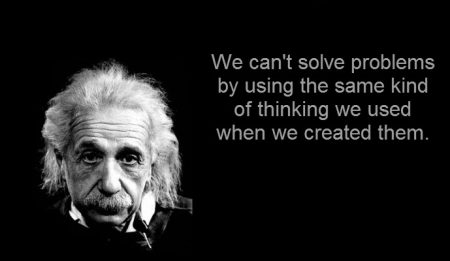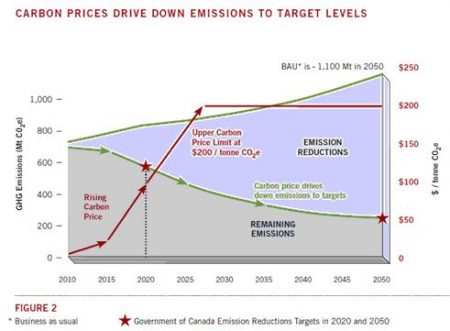August 31, 2016 – The best intentions of policy development often fall by the wayside when politics interferes.
A good example:
British Columbia’s carbon tax. Introduced by its Liberal government back in 2008 at $10 CDN per ton it incrementally rose $5 per ton to $30 over the next four years. Then the government leadership changed and the new provincial premier in the interest of politics stopped increasing the cost of carbon.
The result:
Greenhouse gas emissions that fell steadily over the first five years after introduction of the carbon tax stopped falling and now are on the rise. A policy designed to inhibit and reduce the use of greenhouse gas-producing manufacturing and resource processing, a policy that offset the carbon tax with personal income reductions so that the vast majority of citizens wouldn’t feel the hit in their pocketbooks, a policy that was getting people to rethink their transportation options, is suddenly no longer having the same level of impact. That’s because industry and the public have adjusted to a $30 carbon price which has remained stationary for four years. And according to the latest announcement from the British Columbia government, will remain so for the next several years. Thus a policy with promise is now failing because of the lack of political will.
Policy Works if People Understand Why it is Needed
In Canada the dilemma of addressing climate change and reduced carbon through legislation designed to inhibit fossil fuel reliance is countered by the economic need to ensure all parts of the country are not negatively impacted by that policy. There is an abundance of fear and uncertainty to implementing a carbon tax. What will it do to jobs in fossil fuel resource producing areas? How will it impact transportation in a country that is thousands of kilometers in breadth from coast-to-coast-to-coast? How will it impact the cost of heating homes and businesses in a country that experiences winters that can last six months in the south and longer in the north? And will it achieve the results depicted in the graph below without something else?
Politicians in democratic countries like Canada are challenged by these questions and issues. They find it difficult to address them head on and so they hold town hall discussions and invite the public to express opinion. They delay policy development and implementation because it is easier to kick the can down the road for awhile particularly if an election is only four years in the future.
To master and implement change through enacting policy takes considerably more effort than doing nothing much at all. This appears to be the case in governments around the world trying to implement carbon policy after the COP21 agreement signed in Paris last December. In a speech yesterday, French President Francois Hollande pointed out that only 23 countries of the 195 in the COP21 agreement have ratified it to date. These countries represent 1.08% of all greenhouse gas emissions. COP21 was a declaration that all the nations of the world recognized the urgency of adopting measures to curb carbon emissions. The agreement, however, only goes into effect once 55 nations accounting for 55% of the emissions ratify it. The largest emitters of greenhouse gases including China, the United States, the European Union nations, Canada, Australia, Brazil, India and Russia have yet to ratify.
Why not?
Because the words were easy to agree to, but the actions required are much harder for us to swallow and implement.
In town hall meetings on climate change that I have recently attended, scientists, engineers, environmental planners and government ministers and representatives have spoken on the subject. They have brought out charts and graphs and have stated that action is needed beginning with, but not limited to, a price on carbon. The audiences have been handed the microphone and a chorus have spoken about ending pipeline dreams to bring oil from Athabasca oil sands to tidewater ports. They have talked about giving up cars, about putting solar panels on roofs, about changing how we grow and buy foods, and about changing what we eat.
The government of Canada’s Ministry of the Environment and Climate Change has further solicited the public to contribute ideas for climate change solutions at a dedicated portal. Thousands have expressed themselves including me. It’s good to have a conversation about this but that’s all it is.
So far there is no policy, no legislation, no ratification of COP21.
Ratification requires an act of parliament. Politics requires process and in a democracy dissent is granted a voice. So we remain in a holding pattern until the parliament meets, a bill is tabled and reviewed, a debate is engaged, and then a vote.
None of these democratic processes help Canadians better understand the road ahead. The government states it will implement carbon tax legislation this year. But beyond a national tax no one in government is presenting anything more than a market-driven policy to inhibit carbon emitters at the source.
Isn’t there something missing here?
I would argue that a carbon tax on its own is no solution to climate change. What is needed is a comprehensive set of polices that looks at the nation’s challenges holistically.
For the sake of simplicity I will continue to use Canada as my example in exploring this subject. After all this is the country where I live.
Canada is currently a world leader in developing carbon capture and sequestration (CCS) technology. We have implemented two success stories: the first Boundary Dam and the second, Quest. These two CCS working sites are large-scale solutions capturing CO2 at an emissions source. Boundary Dam grabs the carbon from a coal-fired power plant. Quest captures it in situ from an oil sands site. Canada also has a company developing CCS technology that captures carbon from the air. Its pilot project is up and running in Squamish, British Columbia. What we don’t have is policy focused on CCS at a level that can make an impact on carbon emissions on both a national and global scale. This may be because the first attempts by government to get industry to invest in CCS with government co-investment failed for the most part. But now is the right time to make this a global industry with its headquarters in this country where we have proven expertise. This can be a significant job creator for a workforce such as that in Alberta that has collapsed as oil prices have plunged.
Speaking of oil producers, for oil sands companies to continue to operate under Alberta’s plan to address emissions, they must lower the level of carbon for every barrel of oil they produce. This is called carbon intensification and it is absolutely necessary if the economy of Alberta is to continue to have fossil fuel extraction as part of its mix. At the town halls I attended the suggestion by many was that the oil sands must close. The implications of this for Alberta is a recipe for economic and social disaster. So it makes sense for government and industry collectively to find a way to produce a barrel of oil with as close to net zero carbon emissions. Since oil is based on carbon the burning of it will yield greenhouse gases at end use. But tailpipe or chimney emissions can be handled by other technological solutions. And there too government and industry can make necessary investments to perfect a series of solutions.
Instead of talking about policy related to building of pipelines we need to look at the reality of what is meant by a transition to a low-carbon economic future. In such a future do we need more pipelines or can we not see that demand for fossil fuels will diminish as we implement tighter controls over the carbon we produce? There may be justification in building increased infrastructure to move oil but only on the proviso that the net carbon output is neutral or diminishes over time.
At the same time Canada needs to look at the way it delivers to heat homes and businesses and keep industry functioning across the nation. The efficiency in transmitting electricity over long distances the way we do it today diminishes considerably from source to end user. The map below shows the current state of the country’s energy grid. Note the largely empty areas not served by it. So it seems appropriate that policy be developed to support technology investments in micro grids, in community and rooftop solar projects, and in buildings becoming energy hubs for their neighbourhoods. This is where the dollars from government need to go and industry need to be a partner in this.
The same is true for delivering energy to remote communities which today heavily rely on diesel generators and the transportation of fuel over thousands of kilometers of roads. A nation that pioneered the first telecommunications satellites has to consider ways to take that expertise into the realm of delivering power to the north and isolated areas within the country. In Japan today, research dollars are being spent on creating satellites that will beam energy from space to the surface of the Earth. Where else but in a country as large and sparsely populated as Canada should research of this type be happening?
This is far from a complete list of policy initiatives focused on climate change solutions for the entire nation. I’ve not talked about wind and tide. I’ve not talked about biodiversity and sustainability. I’ve not talked about how we need to rethink our agricultural paradigm. Nor have I talked about fuel cells, battery and other storage technologies, areas where Canadian entrepreneurs and inventors have developed marketable solutions in the past. Nor have I talked about policy focused on retrofitting infrastructure, buildings, factories and homes to lower emissions while improving efficiency. But all of these plus what I have related in the preceding paragraphs are part and parcel of a holistic strategy which requires government not only to act on behalf of the public but to educate it to the possibilities and resulting policies as well.


















